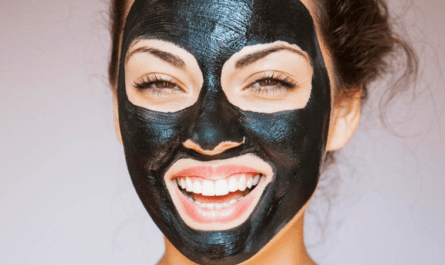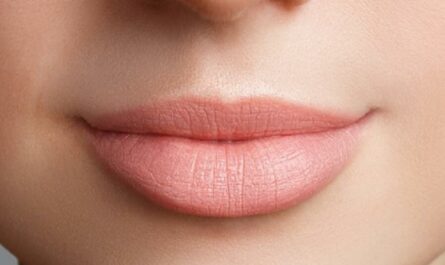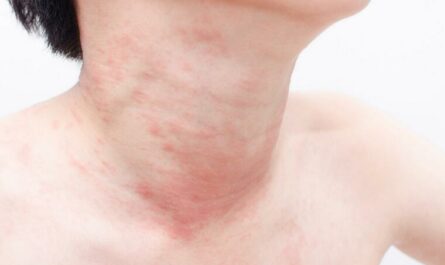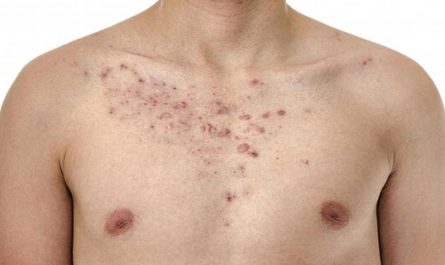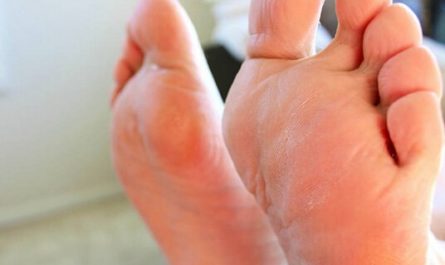Dry patches on the face can be a frustrating and unsightly problem, causing discomfort and embarrassment for many people. Whether it’s due to cold weather, harsh skincare products, or underlying health conditions, these patches can be a nuisance to deal with.
Fortunately, there are several effective ways to get rid of dry patches on the face and restore your skin’s natural radiance. In this article, we will explore some of the best tips and tricks to help you banish those pesky dry patches for good.
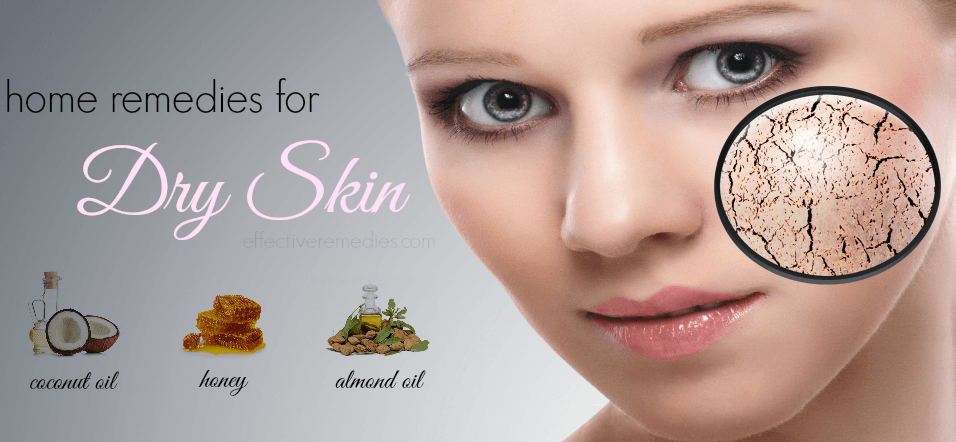
12 Common Causes of Dry Patches on the Face
Here are some common causes of dry patches on the face.
1. Environmental Causes
As the season changes, it also affects the skin and may lead to skin problems like dry patches. Since the face is not always covered when going outside during the winter months or cold seasons, it can be affected immediately by the cold wind.
In addition, the moisture level present in the air during winter is very low. This means that your skin cannot get sufficient moisture from the environment.
Aside from winter, hot temperatures during summer can also harm your skin and may lead to many skin issues like dry patches. The sun’s harmful ultraviolet rays damage the skin and reduce its ability to produce natural oils.
2. Dehydration
Dehydration is a condition that occurs when your body doesn‘t have enough water. It can lead to various unpleasant symptoms, including dry facial patches.
Dehydration can be caused by various factors, such as not drinking enough water or sweating excessively. When your body is dehydrated, it will try to compensate by pulling water from other parts of your body, including your skin. This can cause dry patches on the face and other body areas.
Dry patches on the face can be uncomfortable and even cause skin irritation. They can also make it harder for your skin to retain moisture, leading to further dehydration.
If you’re experiencing dry patches on your face, it’s important to rehydrate your body and replenish the lost moisture.
3. Sun Exposure
Sun exposure can cause dry patches on the face, which can be uncomfortable, itchy, and unsightly. Too much sun can cause the skin on the face to become dry, flaky, and patchy. The sun‘s ultraviolet rays can deplete the skin‘s natural oils, decreasing hydration and moisture levels.
This can cause the skin to become dry and irritated and lead to the development of dry patches. The best way to avoid dry patches on your face caused by sun exposure is to limit your time in the sun and wear protective clothing, such as hats and sunglasses.
Sunscreen with an SPF of at least 30 should also be used on the face when exposed to the sun, even on cloudy days. Sunscreen helps protect the skin from the sun‘s harmful UV rays, preventing the skin from drying out and creating dry patches.
4. Aging
Aging can cause dry patches on the face due to a decrease in the skin’s natural oils and moisture levels. This can be caused by a decrease in the production of collagen, elastin, and hyaluronic acid, which are responsible for keeping skin smooth and hydrated.
As we age, our skin becomes thinner and more prone to environmental factors like sun exposure, wind, and cold weather, which can strip away moisture and leave the skin feeling dry and irritated.
5. Allergies
Allergies are a common condition that can cause numerous skin issues. One such issue is dry patches on the face. These patches can appear suddenly and be very uncomfortable for the person suffering from the allergy.
The dry patches on the face are caused by inflammation of the skin. This inflammation is a result of the body’s response to allergens. Allergens are substances or particles the body perceives as foreign or potentially harmful.
When a person is exposed to an allergen, the body releases a chemical called histamine. Histamine causes the skin to become inflamed, leading to the formation of dry patches. Sometimes, the dry patches may be accompanied by itching and redness.
This can be caused by an allergic reaction to a particular ingredient in your product, such as a moisturizer or cleanser. Environmental factors, such as pollen or dust, can also cause it.
It is important to identify and avoid the allergen to reduce the chance of dry patches forming on the face due to allergies. This can be done by keeping a food and symptom diary or consulting an allergist.
6. Medication Side Effects
Medication side effects can cause dry patches on the face. This is a common side effect of certain medications, including some antibiotics, antipsychotics, anticonvulsants, and even some over–the–counter medications.
In most cases, the patches are caused by the medication drying out the skin, resulting in dry, flaky, and itchy patches. If the dry patches are severe, they may also be able to prescribe a topical cream or ointment to help soothe the skin.
It’s also important to take extra care of your skin when taking medications that might cause dry patches. This includes avoiding hot showers and baths, using a gentle cleanser, and moisturizing regularly. It’s also important to avoid using harsh soaps and detergents, as these can strip the skin’s natural oils and worsen the situation.
7. Liver Spots
Liver spots are flat, black, or brown spots that appear when the skin is always exposed to the sun. Despite its name, liver spots have nothing to do with the liver.
It is caused by long exposure to the sun or aging, which commonly occurs after age 40. These spots usually appear on the face, forehead, shoulders, back of the hands, and forearms.
In most cases, there is no treatment required for liver spots. You can easily improve your skin with bleaching creams or hydroquinone lotions. It can lighten the spots, but if your skin is sensitive, it may cause a skin reaction.
Even though liver spots are not life-threatening, they can mark the appearance of your skin. Some people with many liver spots undergo laser treatment or freezing to get rid of them. If the liver spots change in appearance, it is time to see a medical professional.
8. Eczema
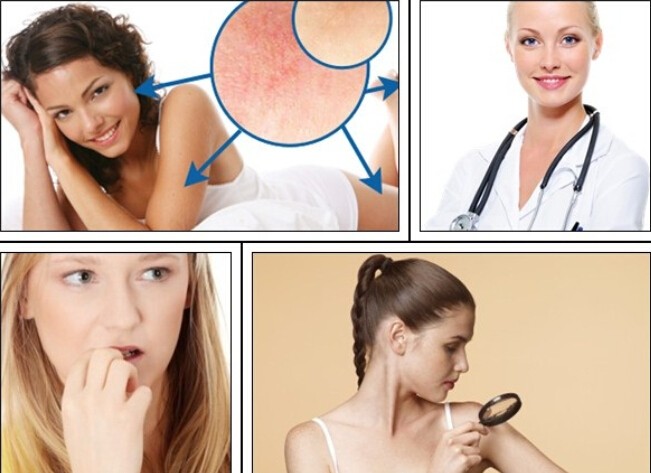
Eczema, also called atopic dermatitis, is a skin condition where patches of the skin crack and become itchy, swollen, and rough. When worse, blisters can appear, and the patches may release a yellowish fluid.
Genetic and environmental factors contribute to the occurrence of eczema. Other factors include irritants, microbes, cold or hot temperatures, hormones, certain foods, allergens, and stress.
Some symptoms of eczema include extreme itchiness and rashes behind the knees, elbows, ankles, legs, and scalp. The skin becomes scaly, and the condition worsens if not treated right away.
Rashes can also develop on the scalp and cheeks. If you suspect that you or someone you know have the symptoms of eczema, seek help from a dermatologist right away for accurate diagnosis and treatment.
Read 10 Natural Home Remedies to Get Rid of Eczema Fast
9. Psoriasis
Psoriasis can also be a cause of dry patches on the face. It is one of the most persistent skin disorders that usually occur on the scalp, elbows, knees, palms, torso, soles of the feet, and face. Psoriasis can range from mild to severe.
According to your condition, the symptoms include plaques of red skin and painful and itchy scales. Sometimes, the scales crack or bleed, and irritated lesions spread to other areas. Other symptoms of psoriasis are discoloration of the nails and crust on the scalp.
Many doctors recommend the application of salicylic acid ointment. This treatment makes the skin smooth and speeds up the shedding of the scales. However, applying this ointment to a large part of the skin may cause your body to acquire too much and may result in a side effect.
Too much application can weaken the hair shafts and cause temporary hair loss. If you or someone shows symptoms of psoriasis, it is best to visit a dermatologist for proper diagnosis and prescriptions.
10. Vitiligo
Vitiligo is a skin condition that causes discoloration. It affects not only the face but also other parts of the body. It can appear inside the mouth and can also affect the eyes. Melanin production determines the color of your skin, eyes, and hair. When the production of melanin stops, vitiligo starts to appear.
Many people are experiencing vitiligo, which is more visible to people with a darker complexion. This skin condition is not contagious and not dangerous. However, the patches can make someone feel embarrassed and lower one’s self-esteem.
11. Poor Diet
Having a poor diet can cause dry patches to appear on your face. This is because the foods you eat can affect your skin‘s health. When your diet lacks essential vitamins and minerals, it can lead to skin dryness, resulting in dry patches.
Vitamins A, C, and E are important for skin health and help hydrate your skin. Not getting enough protein in your diet can also lead to dry patches on your face. Protein is important for producing collagen, which helps keep your skin looking young and healthy. If you do not get enough protein, your skin becomes dry and may become prone to developing dry patches.
Finally, eating too many processed foods can also lead to dry patches. Processed foods are high in sodium and sugar, which can cause your body to become dehydrated. Dehydration can also lead to dry patches on your face.
12. Hormonal Changes
Hormonal changes, such as those that occur during pregnancy or menopause, can cause dry patches on the face.
8 Best Home Remedies for Dry Patches on the Face
For mild skin problems, you can do these treatments at home to keep your skin healthy and hydrated.
1. Coconut Oil
Coconut oil is a natural moisturizer that can help restore moisture to dry patches on the face. Simply apply a thin layer of coconut oil to the affected area and massage gently for a few minutes. Coconut oil is also rich in antioxidants, which can help reduce inflammation and improve skin health.
2. Aloe Vera
Aloe vera is known for its moisturizing and healing properties. Apply pure aloe vera gel to the dry patches on the face and leave it on for 15–20 minutes before rinsing off. Aloe vera can also help reduce redness and inflammation.
3. Honey
Honey is a natural humectant, which helps draw moisture into the skin, making it an effective treatment for dry patches. Apply a thin layer of honey to the affected area and leave it on for 10–15 minutes before rinsing off.
4. Olive Oil
Olive oil is a natural emollient, which means it helps soften and soothe the skin. To use it for dry patches on the face, simply massage a few drops of olive oil onto the affected area and leave it on for 10–15 minutes before rinsing off.
5. Avocado
Avocado is an incredibly nourishing and hydrating fruit that can be used to treat dry patches on the face. Simply mash a ripe avocado into a paste and apply it to the affected area. Leave it on for 10–15 minutes before rinsing off.
6. Yogurt
Yogurt is packed with probiotics and lactic acid, which can help nourish and hydrate the skin. To use it for dry patches on the face, apply a thin layer of plain yogurt to the affected area and leave it on for 10–15 minutes before rinsing off.
7. Petroleum Jelly
Petroleum jelly is a thick, greasy substance that helps seal moisture into the skin, making it an effective treatment for dry patches. Simply apply a thin layer of petroleum jelly to the affected area and leave it on overnight.
8. Oatmeal
Oatmeal is known for its moisturizing and anti–inflammatory properties, which make it an effective treatment for dry patches on the face. Simply grind a few tablespoons of oatmeal into a powder and mix it with a few tablespoons of warm water to form a paste. Apply the paste to the affected area and leave it on for 10–15 minutes before rinsing off.
When to Seek Medical Help
Dry patches on the skin usually disappear with simple home remedies. However, some conditions require medical attention. Visit your doctor right away if you are experiencing these symptoms:
- Inflamed blisters or bleeding blisters.
- Severe dry skin lasts for a long period, and moisturizers are not effective.
- Hair loss.
- Thickened layers of skin.
- Severe dandruff and hair loss.
- Discoloration of fingernails.
- Joint pain.
If you have any of the symptoms mentioned, visit your doctor immediately, as you may have atopic dermatitis, psoriasis, or seborrhea dermatitis.

